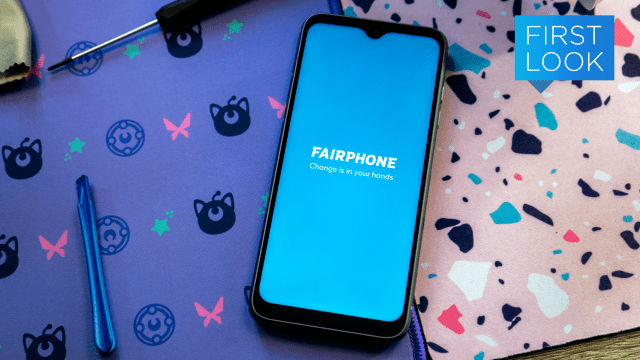I’ve been dreaming of a modular smartphone since I first laid eyes on Google’s Project Ara. The concept made so much sense to me, a person who has built PCs before and isn’t afraid to attack a wire (as long as it isn’t live, of course). But despite the relative user-friendliness behind the idea of swappable modules, Project Ara failed to make it to the real world.
Other modular smartphones have come and gone, but the one with the most staying power thus far is Fairphone, an almost modular and repairable smartphone from the Netherlands. Unfortunately, it remains limited to overseas availability, but the fact that we’re now on Fairphone 4 is something that should be lauded considering that so many others have failed.
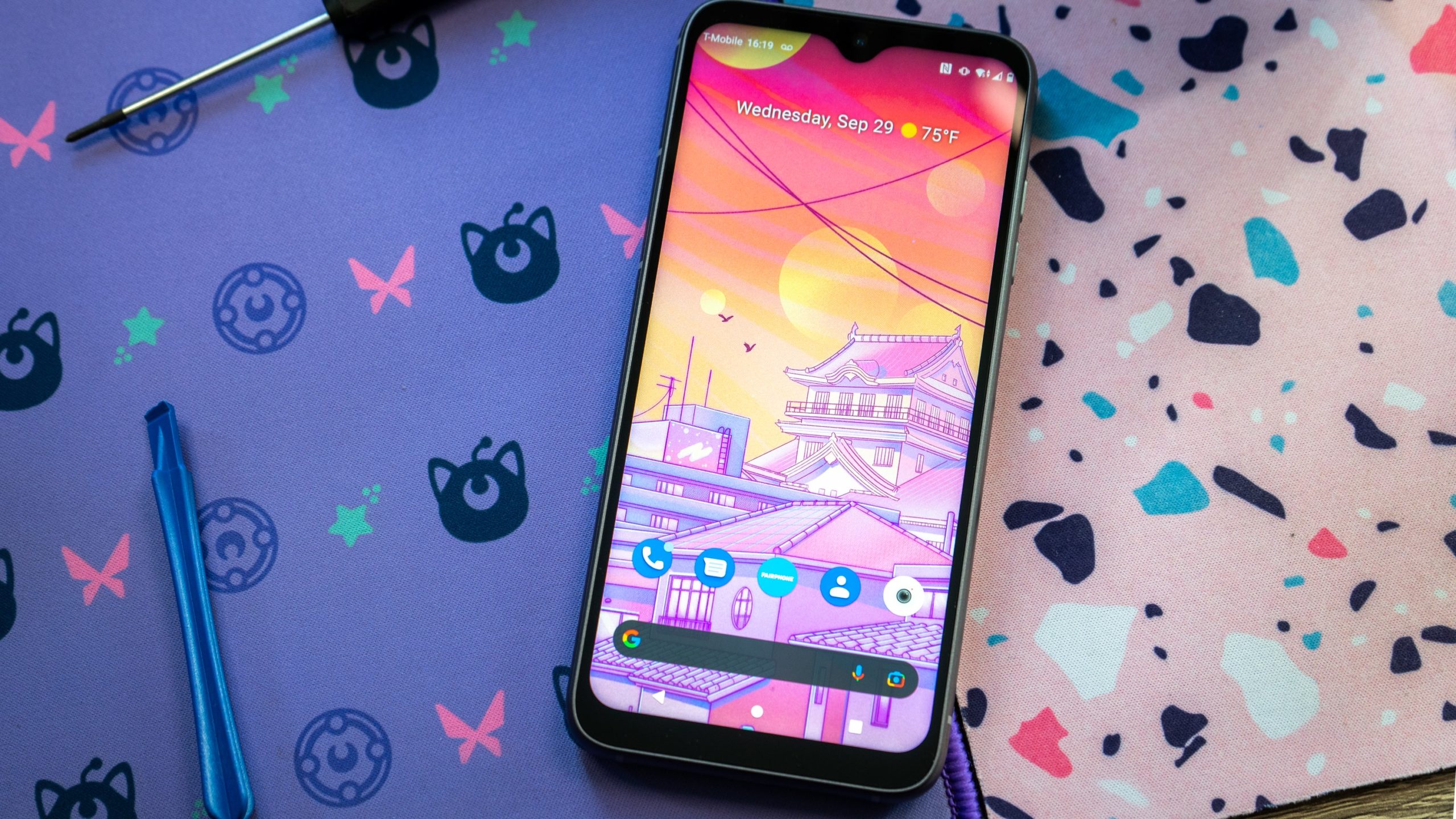
What’s Inside
The Fairphone 4 packs in some pretty impressive specs, making it a definite upgrade from the Fairphone 3+. The Android phone has a larger 6.3-inch Full HD+ display. It runs on a Snapdragon 750G with 6GB of RAM inside and 128GB of storage. The extra bit of memory helps the device feel more responsive than its mid-range processor suggests. Fairphone also boasts that this is the first 5G-capable modular smartphone, though it only works on sub-6Ghz bands and doesn’t support ultra-fast millimetre-wave spectrum. I am using the Fairphone 4 with a SIM from Mint Mobile, but I don’t get 5G service at my house (not surprising).
The Fairphone 4 has a 3,905 mAh battery, which is removable like the phones you used to own back in the day. At first, I was worried about the phone’s battery life, but then I remembered that you could theoretically take a spare with you in a bag and swap it out if there’s no way to charge. Fairphone says the battery lasts up to 200 hours of use while idle. It can also charge up to 50% in half an hour with at least a 20W charger. There’s no charging cable or power brick in the box, so you’ll have to supply your own with the appropriate wattage to enable fast charging.
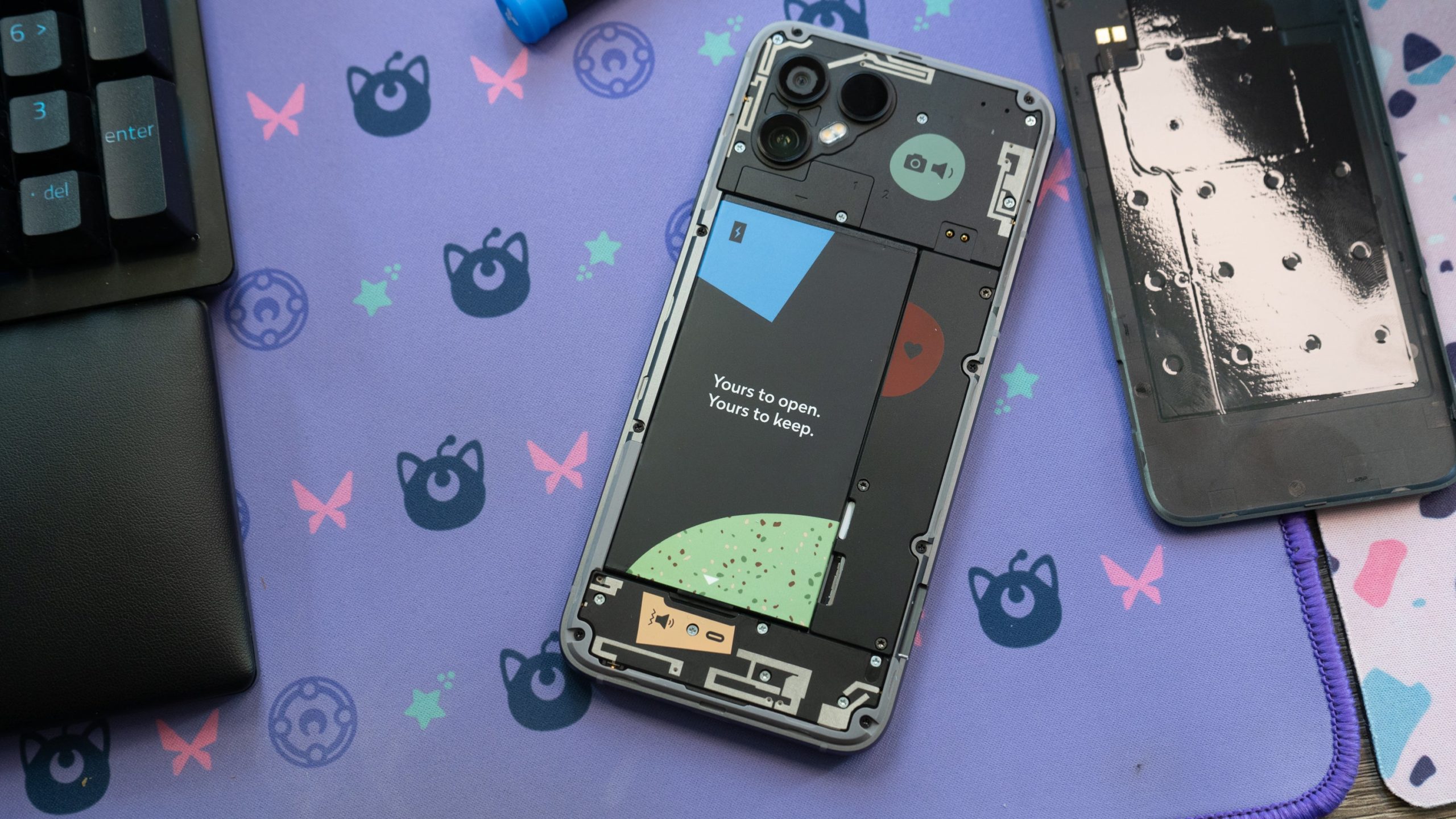
The Fairphone 4 sports dual 48-megapixel rear lenses with a supporting sensor and a 25-MP selfie camera. The primary camera is a Sony IMX582 sensor with an f/1.6 aperture and both colour and time-of-flight sensors. There is 8x digital zoom capability, along with up to 4K video capture at 30 fps and up to 240 fps slow-motion capabilities. You can definitely make some content with this camera.
The Fairphone 4 has no headphone jack. While it may seem like an antithesis to the company’s sustainability claims, I think this makes the most sense considering where we’re at presently. Bluetooth headphones are a dime a dozen, as prevalent as the wired earbuds that came packaged with our phones in yesteryear. The lack of an audio jack might also make it easier for the Fairphone 4 to retain its modularity. Fairphone doesn’t include a USB-C adaptor to add a headphone jack, so if you want to go wired, you’d have to buy it separately.
At £499, or a little under $975 the Fairphone 4 offers some solid features for the price. But don’t expect the bells and whistles you’d get with a Samsung flagship, for instance, because that kind of feature exclusivity comes at a price: a phone you can’t repair yourself.
Still, Fairphone included a fingerprint scanner embedded in the power button, NFC for contactless payments, and a microSD card for extra storage. The company makes another Fairphone 4 with 8GB of RAM and 256GB of storage for £569, or about $1,060. Fair offers an extended five-year warranty, including the guarantee of spare parts until at least 2027, as well as long-term software support.
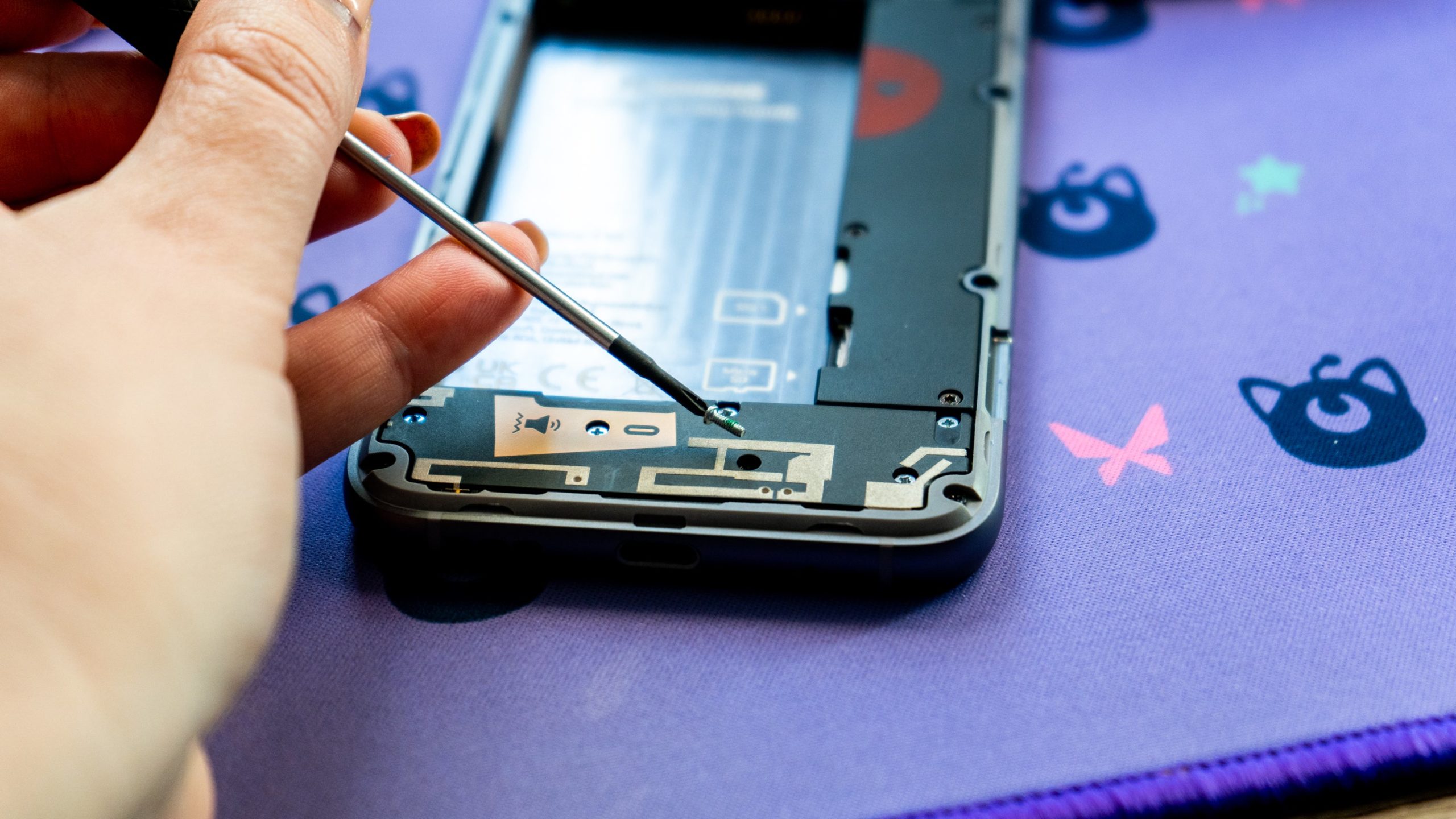
The Fairphone 4 runs on Android 11, and the company says it will receive software updates up to Android 13. And though the company aims to support Android 14 and 15 down the line, you might have to upgrade your chipset to make that possible. That shouldn’t be a problem, of course, because the whole point of the Fairphone 4 is that it’s a long-lasting device.
What It’s Like to Use
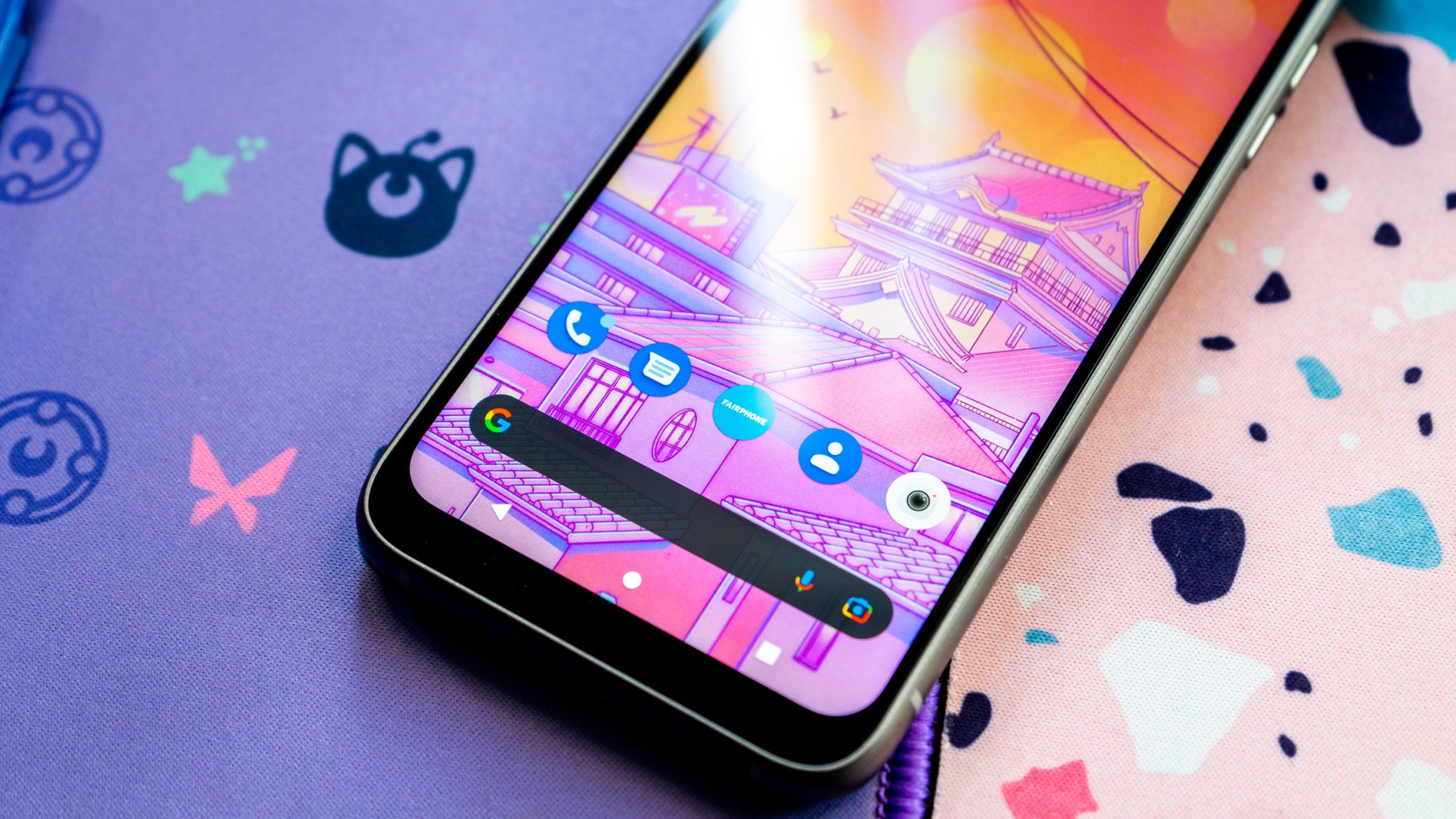
The design of the Fairphone 4 reminds me of Motorola’s line of budget smartphones, the Moto G series. There is a bit of blockiness to the phone, which is something I haven’t had to deal with since thin smartphones became the standard. Frankly, this is the design issue that I can see making the Fairphone 4 difficult to sell. Then again, if you’re the type of person who appreciates tinkering with a device’s insides, you might not notice the Fairphone 4 is two millimetres thicker than devices like the OnePlus 9.
I haven’t had enough time with the Fairphone 4 to really put it through its paces, though I plan to use it for a while and see how it fares with daily use. But after a few days with the first modular smartphone I’ve used since that Project Ara developer conference I attended long ago, I can attest that it’s good!
The Fairphone 4 is capable using apps like Pokémon Go, Office 365, and Google Chrome. In a Geekbench 5 test of overall system performance, the phone scored 638 in single-core and 1859 in multi-core tests. These aren’t Samsung or Apple flagship scores, but you’re not getting a cutting-edge flagship here. Geekbench ranked the Fairphone 4’s performance higher than the Samsung’s solidly mid-range Galaxy A71, which runs on a Snapdragon 730 (and cost about $630 at launch last year).
I played with the camera settings a bit, too. They’re laid out much differently than what you’d see on the Google Pixel’s camera app, for instance, and there were a few times I had to wait for the app to finish taking the photo before moving on to the next scene. And while the images taken with Auto HDR are vibrant enough to share online, you can easily see where the camera struggles when it’s indoors. The camera can also zoom in quite a bit, but the result is overly pixelated.
Clearly, we have some work to do before a modular phone’s camera is as good as a flagship iPhone, for instance. But maybe we can get there.
Removable, Repairable Parts
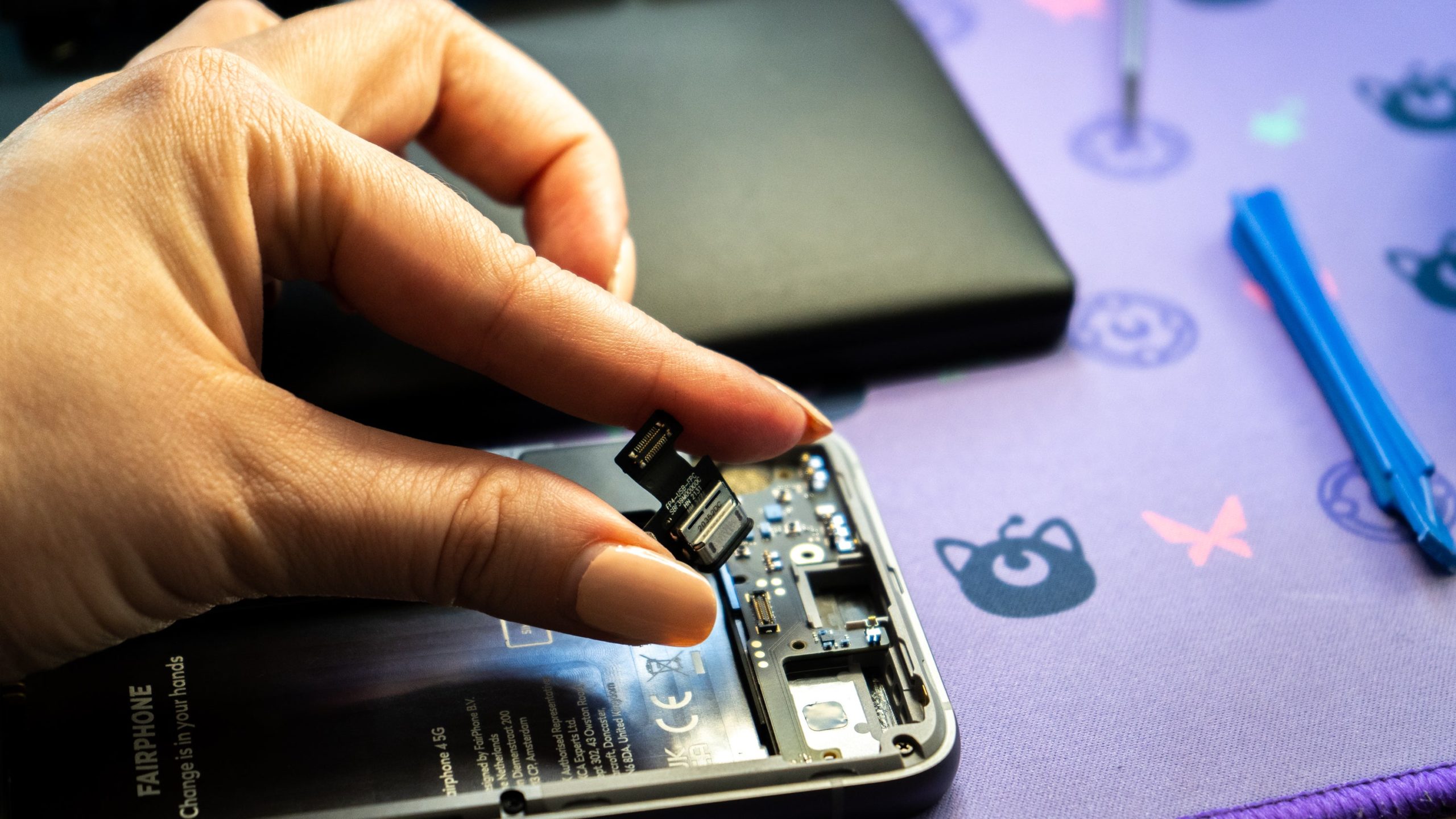
The Fairphone 4 is as modular as its predecessors. You can swap out seven modules, from the USB-C port that charges and delivers audio, to the loudspeaker and earpiece. The cameras are swappable, too. You can also replace the display for less than $150, and all it requires is removing and keeping track of eight tiny screws. The Fairphone 4, in particular, is one of the few devices you’ll see with the 10/10 iFixit repairability score, and that’s because you can quickly take it apart yourself. (The others that have earned a 10/10 are, of course, earlier Fairphones.)
I haven’t yet fully taken apart the Fairphone 4, though I did take out its loudspeaker and USB-C module, which are both offered as spare parts. It was absurdly easy to do with a Phillips 00 screwdriver, though I’ve built PCs and mechanical keyboards so I’m comfortable with poking and prodding at circuits. I was worried at one point that I’d messed up the connecter between the USB-C and the rest of the device, but the Fairphone 4 turned back on after I reseated it. It’s charging as I type.
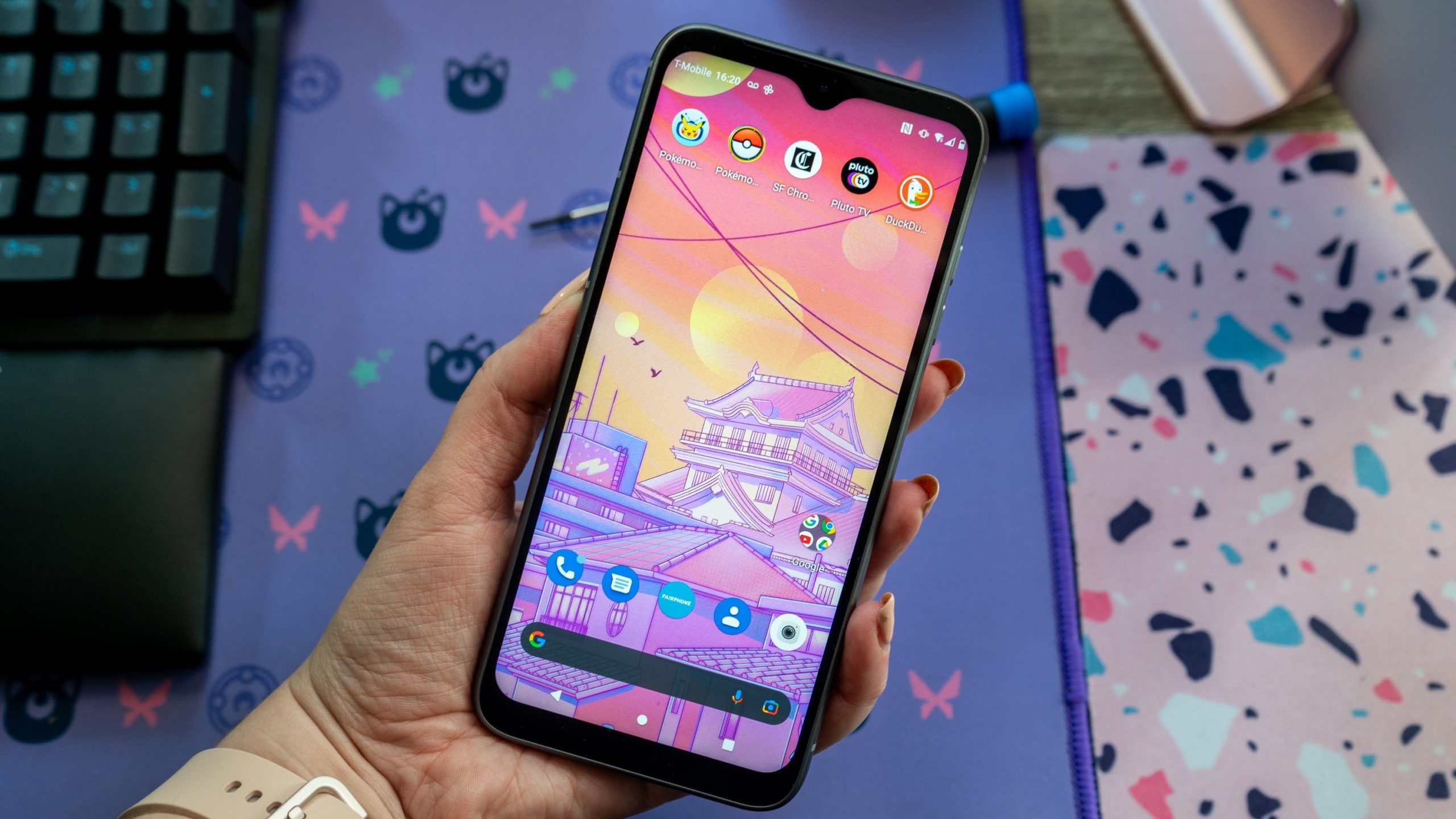
Fairphone says its mission is to set an example for the tech industry, to show that it’s possible to manufacture electronics ethically while also being commercially successful. It’s easy for tech companies to hype their sustainability efforts, but they could also do more to eliminate the mounds of e-waste contributing to climate change by making it easier for people to extend the lives of their devices.
Although the Fairphone 4 isn’t directly offered in Australia— it’s only available in select European countries — it does come at a time that the Right to Repair movement is picking up steam. With Fairphone as a partner in the Right to Repair campaign, I imagine Fairphone 4 will be used as an example of how to a repairable phone could be manufactured.
But I can’t help but feel like humanity needs a philosophical shift before modular, repairable devices become the norm. Smartphones are sold to us based on their new capabilities, and the whole point of the marketing machine is to make us want the newest, shiniest thing. I could see the Fairphone 4 appealing to buyers of mid-range phones who might not be interested in the latest and greatest but want to upgrade or fix parts as they see fit. (It would be nice if you could upgrade the system-on-chip like you can on a PC, but that’s not possible — yet.) The Fairphone 4 shows that it’s possible to make an affordable, modular phone. It remains to be seen if any other tech company will even try.
